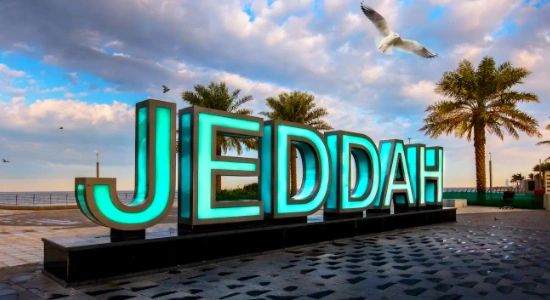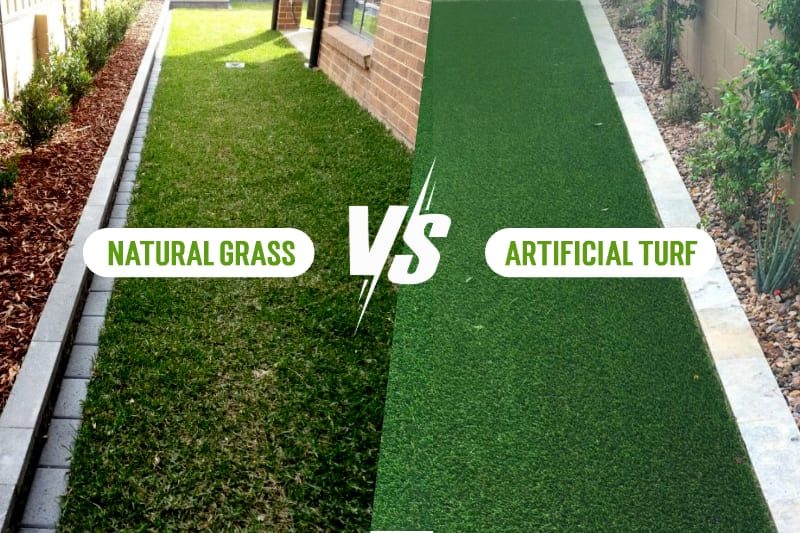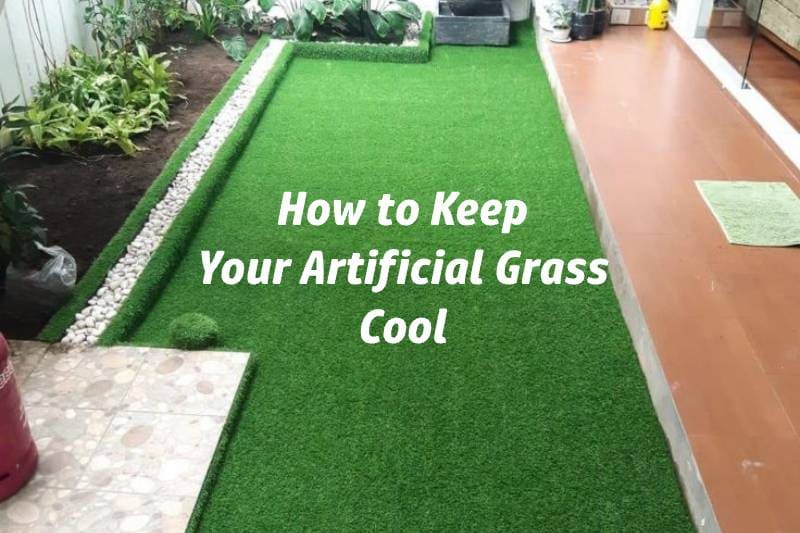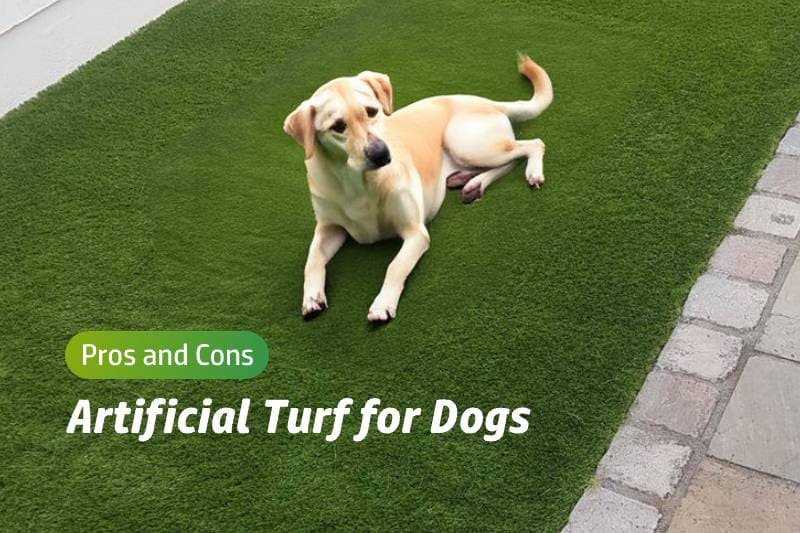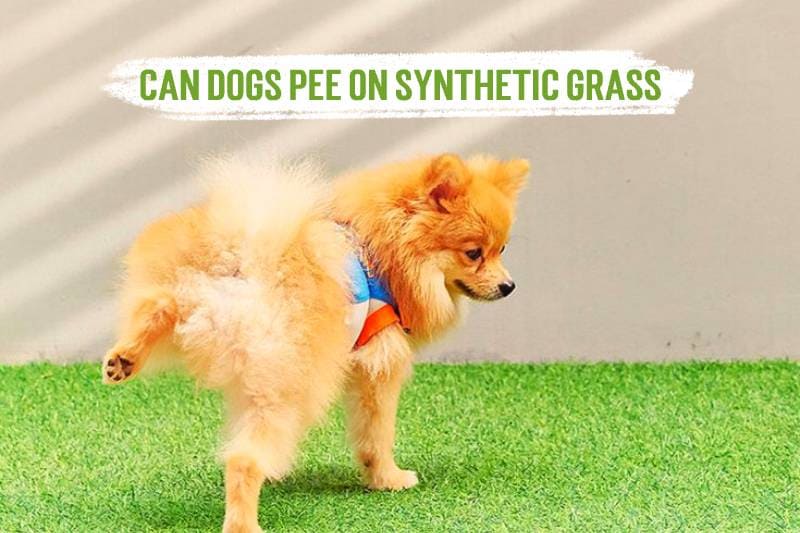Transforming dull concrete into a vibrant green space is easy. Artificial grass can replace natural grass, making it perfect for patios, around pools, or in yards. It remains green throughout the year and enhances the overall appearance. Many homeowners utilize it to create a larger or more inviting outdoor area. Properties featuring artificial grass often see a 7% increase in value. This guide will show you how to lay artificial grass on concrete, ensuring a tidy and durable finish.
- Fake grass changes boring concrete into colorful, fun spaces. It improves your outdoor area.
- It’s easy to take care of; no mowing, watering, or fertilizing. This saves time and money.
- Getting the concrete ready is very important for a strong and neat installation.
- Artificial grass can go on patios, balconies, or play areas. It makes outdoor spaces more useful.
- Cleaning and checking drainage often keeps your fake grass nice for a long time.
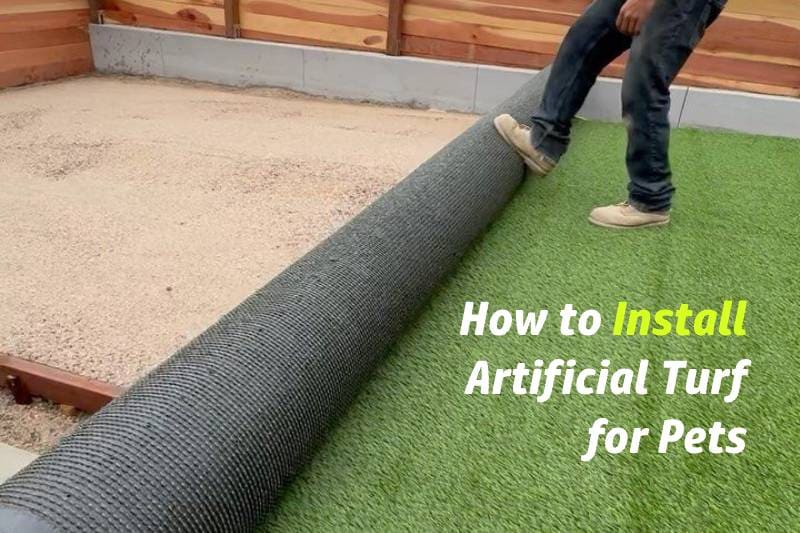
Benefits of Installing Artificial Grass on Concrete
Making Hard Surfaces Look Better with Artificial Grass
Concrete can seem boring and cold, but artificial grass fixes that fast. It adds a soft, green look that feels warm and friendly. Use it to brighten up patios, balconies, or play areas. Artificial grass turns plain, gray spots into colorful, useful spaces. You can make a comfy outdoor hangout or a safe play spot for kids. It also matches any style, whether modern or rustic.
Tip: Use artificial grass near pools or on rooftops. It looks lush without needing care like real grass.
Easy to Care for and Long-Lasting
The best thing about artificial grass is how easy it is to keep up. Once it’s on concrete, you don’t need to mow, water, or fertilize. It costs $9-$12 per square foot to install, but you save money over time.
- No watering means lower water bills.
- No lawn mower needed, saving money and effort.
- Spend less time taking care of it.
Artificial grass stays green and nice-looking for years, no matter the weather. In hot places like Phoenix, people save up to 44,000 gallons of water each year by using it. That’s good for your wallet and helps the planet too!
A Green and Budget-Friendly Choice
Putting artificial turf on concrete helps the environment. You won’t need harmful chemicals like pesticides or fertilizers, which keeps nature safe. No mowing also means less energy use and less air pollution.
- Saves water since no irrigation is needed.
- Stops erosion and runoff, especially on slopes.
- Protects habitats and water by cutting out chemicals.
Choosing artificial grass is smart for your budget and the Earth. It’s a win for you and nature!
Versatility for Patios, Balconies, and Play Areas
Artificial grass isn’t just for lawns anymore. It’s great for patios, balconies, and play areas. You can use it to change your outdoor spaces completely. Want a cozy spot or a fun area for kids? Artificial grass on concrete can do both.
On patios, it adds a soft, green touch. This makes the space feel warm and welcoming. Turn a plain patio into a relaxing spot with chairs and cushions. Add a fire pit for cozy evenings with friends or family. On balconies or rooftops, it creates a comfy, homey feel. Imagine drinking coffee on a green balcony—it’s a great way to start your day.
For kids, artificial grass is a safe and soft play surface. They can run, jump, and play without worry. Add fun things like small playhouses or sandboxes. Bright rugs and bean bags make it even more exciting. Use benches with storage to keep toys neat and hidden.
Artificial grass is also perfect for spaces with many uses. You can have a seating area next to a small playground. Its soft feel and natural look fit any design. It’s strong and easy to clean, so you’ll enjoy it for years.
Tip: Use artificial grass to connect areas like patios and play zones. This makes your outdoor space look bigger and more connected.
Follow this guide to install artificial grass on concrete. It works for patios, balconies, or play areas. Artificial grass is a smart and stylish choice for any space.
Preparations Before Installing Artificial Grass on Concrete
Before putting artificial grass on concrete, get the surface ready. This helps the turf last longer and look better. Follow these steps to prepare.
Checking the Concrete Surface
Look for Cracks or Uneven Spots
Check the concrete for cracks, holes, or uneven areas. These can make the turf look bad or wear out faster. Fill small cracks with a leveling compound. Fix or replace big damaged parts. The surface should be flat and stable.
Tip: Feel the surface with your hand to find hidden bumps or dips.
Clean the Surface
A clean surface helps the glue stick well. Sweep away dirt and leaves with a broom or blower. Scrub off grease or stains using soap and water. Let the concrete dry fully before moving forward.
Cleaning Checklist:
- Clear away dust and loose debris.
- Wash off any stains or grease.
- Make sure the surface is smooth and dry.
Fixing Drainage Problems
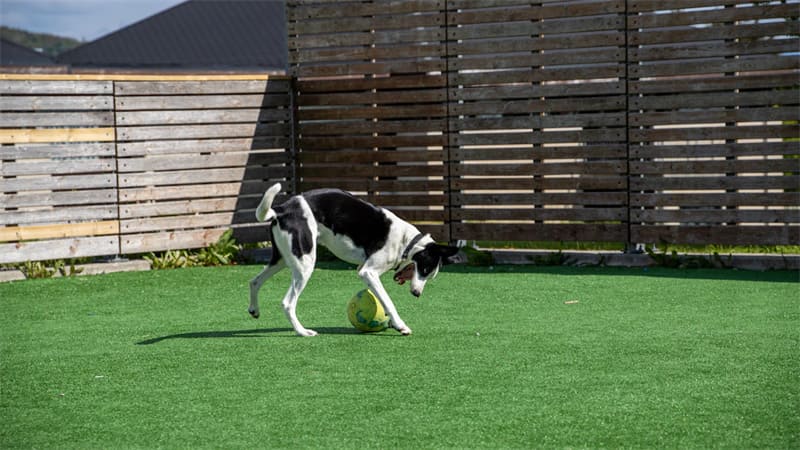
Why Drainage Matters
Good drainage keeps your artificial grass in great shape. Without it, water can collect and cause mold or damage. Pour water on the concrete to check for puddles. Fix any drainage issues before starting.
Use a Drainage Layer
Add a layer that lets water pass through, like foam or shock pads. This also makes the turf softer to walk on. Stick the layer to the concrete with glue or tape so it stays in place.
Pro Tip: Drill small holes in spots where water collects to avoid future problems.
Measuring and Planning
Measure the Area
Measure the space where you’ll put the turf. Use tools like Moasure to find the size and boundaries. This helps you buy the right amount of turf without wasting money.
Plan Turf Placement
Decide how to lay the turf rolls to hide seams. For tricky shapes, use tools to measure slopes or curves. This ensures the turf fits perfectly.
| Feature | What It Does |
|---|---|
| Site Measurement | Maps the area and calculates the size. |
| Elevation Check | Finds slopes and drainage paths. |
| Accurate Data | Helps with odd-shaped spaces. |
| Slope Measurement | Ensures water drains properly. |
Taking time to measure and plan makes the job easier. A good layout gives your turf a neat and professional look.
Tools and Materials for How to Lay Artificial Grass on Concrete
Before starting, gather the right tools and materials. This makes the job easier and gives a neat finish. Here’s what you’ll need:
Essential Tools
Utility Knife, Measuring Tape, and Adhesive Spreader
These tools are very important for installing artificial grass. Use a measuring tape to get exact sizes. This avoids wasting turf or running out. A utility knife helps cut and shape the turf to fit perfectly. An adhesive spreader spreads glue evenly, keeping the turf secure and smooth.
| Tool | Purpose |
|---|---|
| Measuring Tape | Helps measure the area correctly |
| Utility Knife | Cuts and trims the turf |
| Adhesive Spreader | Spreads glue to hold the turf in place |
Broom or Leaf Blower for Cleaning
Cleaning the surface is very important. Use a broom or leaf blower to clear dirt and dust. This helps the glue stick better and keeps the turf flat.
Pro Tip: A leaf blower is faster for big areas. A broom works well for small spots or tough dirt.
Materials Needed
Artificial Turf Rolls
Pick good-quality artificial turf that matches your space. Choose turf with a natural look to improve your outdoor area.
Adhesive or Double-Sided Tape
Glue or double-sided tape is needed to attach the turf. Glue works best for large spaces. Tape is better for small or temporary projects.
Shock Pad or Foam Underlay (Optional)
Adding a shock pad or foam underlay makes the surface softer. It’s more comfortable to walk on and helps with drainage. It also makes the turf last longer.
Sand or Rubber Infill (Optional)
Infill, like sand or rubber, keeps the turf blades upright. It also adds weight to hold the turf in place. This step is optional but makes the turf look and feel more real.
Tip: Use infill in busy areas to make the turf stronger.
With these tools and materials ready, you can install artificial grass on concrete easily and professionally.
Step-by-Step Guide to Installing Artificial Grass on Concrete
Step 1: Clean and Get the Surface Ready
Clear Away Dirt and Dust
Start by cleaning the concrete well. Use a broom or leaf blower to remove dirt and dust. Scrub off grease or stains with soap and water. A clean surface helps the glue stick better, making the turf stay in place.
Pro Tip: Make sure the surface is grease-free and fully dry. This avoids problems with sticking later.
Check for Dryness and Smoothness
After cleaning, ensure the concrete is dry. Wet spots can weaken the glue and cause problems later. Feel the surface for bumps or dips. Fix uneven areas with a leveling compound to make it smooth.
Preparation Checklist:
- Sweep away all dirt and debris.
- Wash and remove grease.
- Repair cracks or uneven spots.
- Ensure the surface is dry and flat.
Step 2: Add an Underlay (Optional)
Why Use a Foam Layer?
A foam underlay isn’t required but has benefits. It makes the surface softer and more comfortable. It also hides small flaws in the concrete and helps with drainage.
| Benefit | What It Does |
|---|---|
| Softer Surface | Makes walking easier and safer for kids and adults. |
| Longer Turf Life | Protects the grass fibers, helping it last longer. |
| Better Drainage | Stops water from pooling, keeping the area dry and clean. |
Did You Know? Foam pads meet safety standards for parks and schools, making them a great choice for public spaces.
Attach the Underlay to the Concrete
Roll out the foam layer over the concrete. Cut it to fit the area. Use glue or tape to hold it down. Make sure it’s flat with no wrinkles or gaps. This gives a solid base for the turf.
Step 3: Place and Adjust the Turf
Position the Turf for a Natural Look
Roll out the artificial turf on the prepared surface. Check the direction of the grass fibers—they should all face the same way for a neat look. If using more than one piece, line up the seams carefully to avoid gaps.
Tip: Lay the turf in the opposite direction of any slope for the best appearance.
Trim the Turf for a Perfect Fit
Cut the edges of the turf with a utility knife. Leave a little extra at the edges to ensure a snug fit. For odd shapes, cut slowly and carefully to match the area.
Pro Tip: Measure twice before cutting to avoid mistakes.
By following these steps, you’ll create a clean and professional look when installing artificial grass on concrete.
Step 4: Secure the Turf
Applying Adhesive or Double-Sided Tape
Now that your turf is in place, it’s time to secure it. You can use adhesive or double-sided tape, depending on your project size. For larger areas, adhesive works best. It provides a strong bond that keeps the turf in place for years. Spread the adhesive evenly across the concrete using an adhesive spreader. Focus on the edges and seams to prevent lifting.
For smaller or temporary projects, double-sided tape is a great option. It’s easy to apply and doesn’t require much effort. Place the tape along the edges and under the seams. Peel off the backing as you press the turf down. This method is quick and mess-free.
Tip: Use a high-quality adhesive or tape to ensure a non-slip surface. This keeps the turf safe and secure, even in high-traffic areas.
Pressing Down the Turf to Ensure Adhesion
Once the adhesive or tape is in place, press the turf down firmly. Start at one end and work your way across. Use your hands or a roller to apply even pressure. This step ensures the turf sticks properly and creates a smooth finish.
Pay extra attention to the edges and seams. Press them down tightly to avoid gaps or curling. If you notice any loose spots, add more adhesive or tape. Taking your time here will give you a professional-looking result.
Pro Tip: Walk over the entire surface after pressing it down. This helps secure artificial turf and ensures it stays in place.
Step 5: Add Infill (Optional)
Benefits of Sand or Rubber Infill
Adding infill is optional, but it offers several benefits. It keeps the turf blades upright, giving it a natural look. Infill also adds weight, which helps hold the turf in place. This is especially useful for areas with heavy foot traffic.
Sand infill is affordable and provides a firm base. Rubber infill feels softer and absorbs impact, making it ideal for play areas. Both options improve drainage and extend the life of your turf.
Did You Know? Infill can also make your turf a non-slip surface, perfect for patios or around pools.
Spreading and Brushing the Infill Evenly
To apply infill, spread it evenly across the turf using a seed spreader or your hands. Start with a small amount and add more as needed. Use a stiff brush to work the infill into the turf fibers. Brush in different directions to ensure even coverage.
This step not only enhances the appearance but also improves the turf’s durability. It prevents the blades from flattening and keeps your surface looking fresh.
Tip: Avoid overfilling. Too much infill can make the turf feel hard and uncomfortable.
By following this step-by-step guide, you’ll know exactly how to lay artificial grass on concrete like a pro. Whether you’re installing artificial turf for a patio, balcony, or play area, these steps will help you achieve a polished and long-lasting result.
Tips for Maintaining Artificial Grass on Concrete
Taking care of your artificial grass is simple and quick. With easy steps, you can keep it looking great for years. Follow this guide to maintain your turf like a pro.
Regular Cleaning and Brushing
Clearing Dirt and Keeping It Neat
Clean your artificial grass often to keep it nice. Use a broom or leaf blower weekly to remove leaves and dirt. If it hasn’t rained, rinse the turf with a garden hose to wash off dust. For busy areas, brush with a stiff broom monthly to stop flattening and keep the grass looking real.
Quick Cleaning Tips:
- Brush against the grass direction to lift the blades.
- Clean spills quickly to avoid stains.
Regular cleaning keeps your turf fresh and ready for use anytime.
Fixing Common Problems
Securing Loose Edges or Seams
Edges or seams might loosen over time, especially in busy spots. If this happens, add glue or tape to fix them. Press down firmly to make sure they stay in place. Check these areas often to avoid bigger problems later.
Improving Drainage When Needed
Good drainage helps your turf last longer. After heavy rain, check for puddles. If water collects, add more infill or make small holes to let water flow. This stops mold and keeps your turf in top shape.
Seasonal Care Tips
Protecting Turf in Bad Weather
Extreme weather can affect your artificial grass. Before heavy rain or snow, add extra infill to keep it stable. In winter, use a plastic shovel or broom to clear snow gently. Avoid metal tools, as they can harm the turf.
Pro Tip: Cover your turf during storms to protect it from damage.
Adding Infill When Needed
Seasonal changes can move or compact infill. Check the levels often and add more if needed. Infill keeps the grass blades upright and helps with drainage, making your turf look and work better.
By following these tips, your artificial grass will stay beautiful and last longer. A little care goes a long way in protecting your investment.
Installing artificial turf on concrete is a simple project with big rewards. It transforms dull spaces into lush, green areas that are safe and visually appealing. With this guide, you can achieve a professional finish that lasts for years.
- High-quality turf can last up to 20 years.
- It enhances curb appeal with its vibrant look.
- It’s safer than concrete, reducing slips and falls.
Start your project today and enjoy a low-maintenance, beautiful outdoor space that feels like a green oasis!
FAQ
What should I check before adding artificial grass to concrete?
Look for cracks, check drainage, and plan the layout. These steps make the turf last longer and look nice. Preparing well ensures an easy installation.
Can I put artificial grass on bumpy concrete?
Yes, but you need to make it smooth first. Fill cracks or dips with a leveling compound. A flat surface helps the turf stay in place and look good.
Do I need an underlay for artificial grass on concrete?
It’s not required but is a good idea. An underlay makes it softer, helps with drainage, and keeps the turf lasting longer. It’s great for play areas or busy spots.
How do I keep artificial grass clean on concrete?
Use a broom or leaf blower to clear dirt. For stains, wash with water and mild soap. Cleaning often keeps your turf fresh and looking great.
Can artificial grass handle lots of rain?
Yes, but drainage is very important. Add a layer that lets water pass through or drill small holes in the concrete. This stops water from pooling and keeps the turf in good shape.




